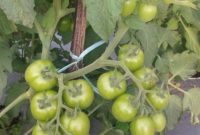Surface irrigation is the predominant method of irrigation throughout the world and has been used for thousands of years to irrigate a wide range of crops. Through the years, great improvements have been made to the wild flooding practice. Today there are a wide range of surface irrigation practices that allow the farmer an opportunity to select the practice that best fits conditions in the field.

Since the distribution of water with a surface system is dependent on the natural flow of water over the area to be irrigated, the land slope becomes very important.
The Operation and maintenance of farm surface irrigation systems:
1. Clear the head ditch and conveyance canal of weeds and debris on a regular basis. Obstructions greatly influence the flow rate.
2. Check for washouts around the edges of all control structures along the conveyance system to the field.
3. Conduct micro-levelling in the border or basin: the need will become evident after the first couple of irrigations.
4. Regulate the flood gate or other means of turning in the water so that the water advances across the plot(s) as quickly as possible without creating erosion.
5. Make sure the operator knows how much water is being placed on the field.
6. Reform the ridges, levees, or furrows when necessary. Conduct land smoothing often.
7. Keep animals off of field.
8. Fill in or plug any rodent or ant holes.
9. If it is necessary to slow down velocity in canals, place heavy objects (e.g. rocks) in the canal to form a small check.
10. Pre-irrigate land before transplanting on to furrow beds.
11. Check field one to two days after irrigation with shovel or soil auger to assure uniform distribution of water.
